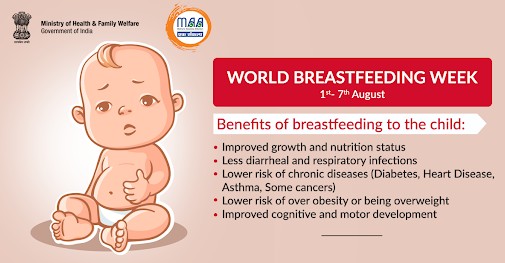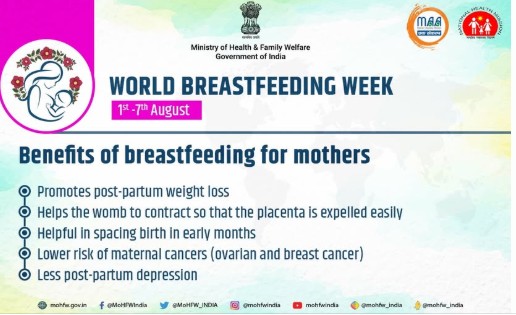7667766266
enquiry@shankarias.in
Mains: GS II – Issues Relating to Development and Management of Social Sector/Services relating to Health
Recently, India continues to see a drop in exclusive breastfeeding by six months, despite high initiation rates.
|
World Breastfeeding Week |
|


In breastfeeding, latching refers to how a baby attaches their mouth to the mother's breast to feed. A good latch involves the baby's mouth covering not just the nipple, but also a portion of the areola (the dark area around the nipple). This allows for effective milk transfer and minimizes discomfort for the mother.
Weaning, is the process of switching an infant's diet from breast milk or formula to other foods and fluids.
The Hindu| Structural Reforms to Promote Breastfeeding